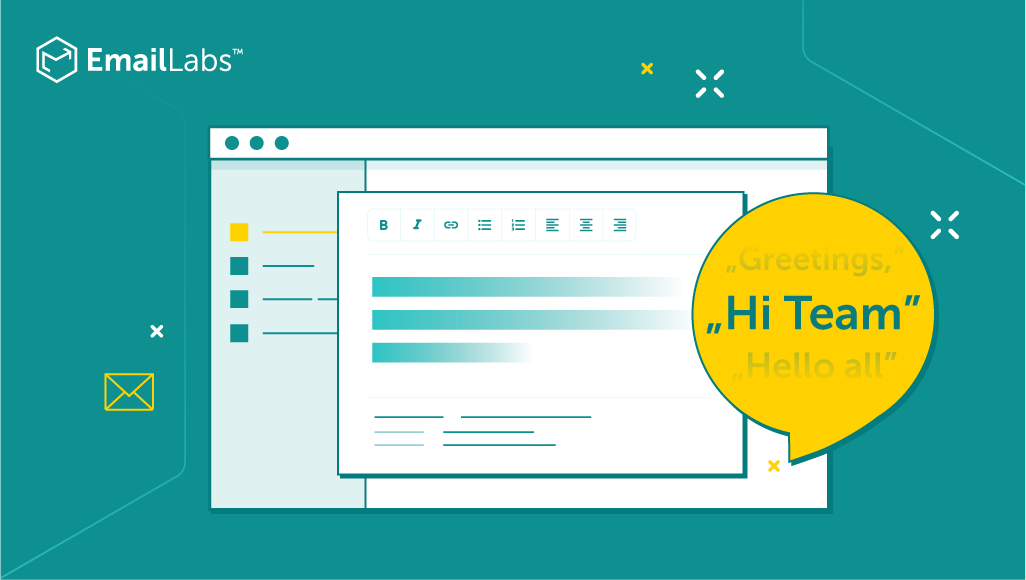
At this point in time, it is safe to assume that despite the influx of new technology, email is a no-brainer medium for business communication. It isn’t difficult to understand why – emails are quick to write and easy to send while still maintaining formal etiquette.
Yet, writing email responses does not always come naturally to everyone. Let alone grammatical errors or typos, often, people don’t know how to respond effectively, especially in the case of mass emails.
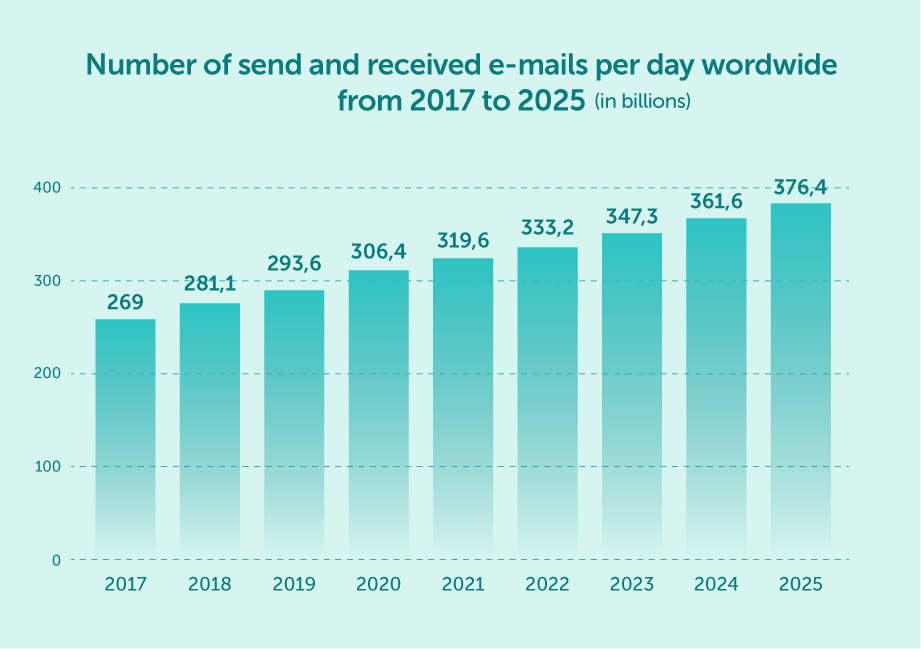
source: Statista
Fortunately for you, we’ve completed a list of email writing tips to help you craft effective and appropriate responses to your recipients. No matter whether you answer job search inquiries or address customers, here’s how you can make your email responses stand out.
This goes without saying – responding in a timely manner is crucial in maintaining a fruitful conversation. In most cases, the person on the other side of the email thread would expect a response within 24 hours. This doesn’t mean you should respond right after you read the email, but if you manage to do this faster than expected, it could help build a stronger rapport with your recipients.
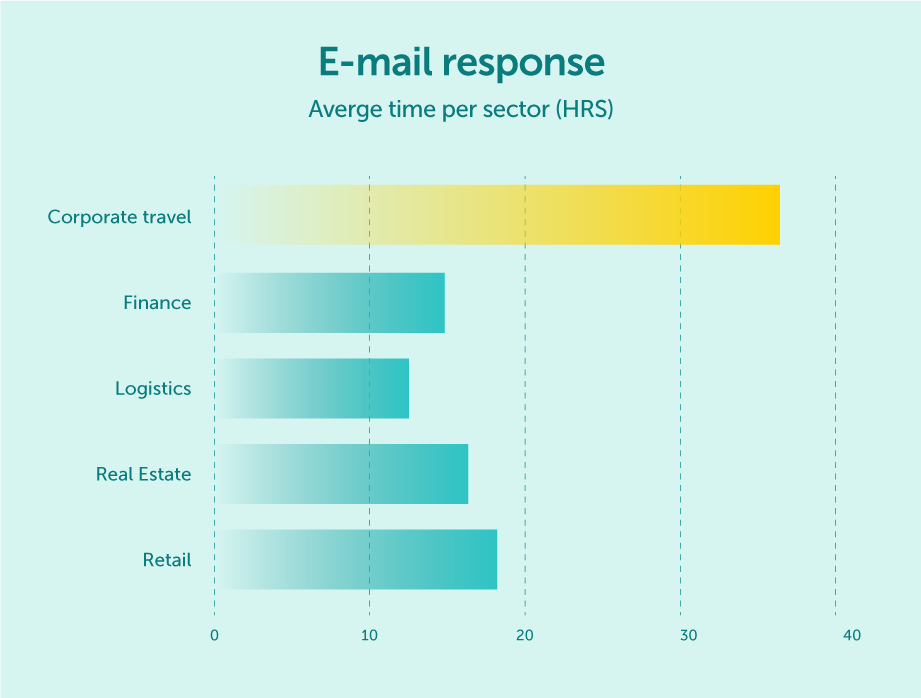
According to a study by HiverHQ, the average response time for a potential customer emailing a corporate business is 36 hours.
However, when it comes to the right time to send a follow-up email, you should also be mindful of the recipient’s schedule. For instance, if you sent your previous message in the morning, but the recipient answered late in the night, you should wait until the next day to reply.
On top of that, if you’re writing to a customer from an international location, take into consideration their time zone and if they’re available in the time frame you have set. This way, you know your mail won’t come across as intrusive.
Maximize your email deliverability and security with EmailLabs!
No matter what the nature of your email is, it’s important to sound professional in your responses. Using a polite and respectful tone can have a significant impact on how your email is perceived and can make a good impression on the person you are writing to.
In your response, you should also be careful with your wording. Avoid using slang or casual phrases, and use proper grammar and punctuation at all times. Always include salutations, such as Dear or Hello, at the beginning of your email, and sign off with closing remarks, such as Best regards or Kind Regards, before your email signature.
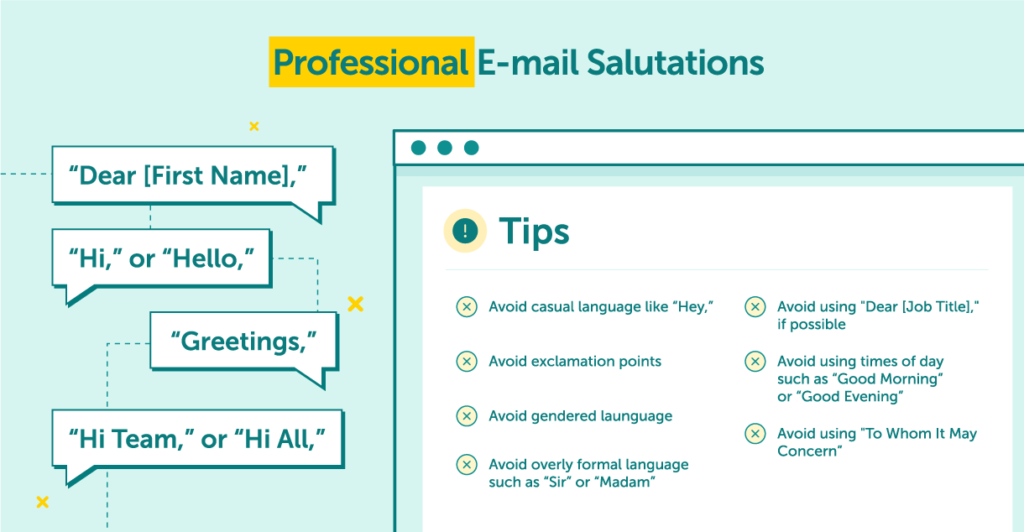
We’ve provided some email salutation examples, that illustrate how to greet in an email formal. Still, we’d also urge you to use your judgment too.
While those may not seem as much, they can create a more impactful image of your company. As such, your recipients – and hopefully future customers – will find you more reliable and trustworthy if you remain consistent throughout the course of the conversation.
When responding, it’s vital that you remind the sender of the context surrounding the email. This can be accomplished by including a short summary of what was discussed previously in the thread.
It doesn’t have to explain everything, as that could be considered patronizing. Rather, you should mention the general idea to refresh the recipient’s memory and let them know you’ve been paying attention to the messages.
A short answer to the question they asked, or a brief summary of the action you agreed on, will be enough to add context.
When speaking about email etiquette and the concerns most people have about writing effective emails, the concept of emotion often gets overlooked – and as a result, they have trouble sending something more than cold messages stripped of any feeling.
However, evoking emotion in your email response is as important as following grammar rules and using formal words. The relationship between the sender and the recipient is nothing short of in-person communication, and it should be treated as such.
The emails you write don’t need to sound like overly personal conversations, but a hint of emotion can make them seem more sincere and friendly. For example, showing that you are genuinely interested in the conversation or that you hope the recipient’s business venture is going well can make your emails more memorable.
People undermine the importance of positive feedback and the response it deserves. When someone sends you a note of appreciation, take the time to thank them for their kind words.
Your response should be adjusted to the sender of the original message. If they are casual clients, you can answer with a light tone and point them to a relevant blog post. If your recipient is a professional, you can reply with some valuable insights or advice concerning marketing or business strategy.
Either way, make sure to thank the person for their feedback and let them know that you value it. It will only help to strengthen your relationship with your customer base and make them more likely to come back in the future.
With all of the above, you cannot overlook the importance of authenticity. You should be genuine when you respond and avoid using a script or template, as it can come off as insincere.
Your response email should be tailored to the individual and reflect your own ability to address the recipient in a personal and meaningful way. The goal is to make them feel like you understand their message and that it has been taken seriously.
Your response should be unique – or at least it should sound so, even if you respond to multiple people with the same issue. This way, your recipients won’t feel like they are being dismissed with a generic answer.
Email etiquette does not allow you to push your clients toward a decision, but if you are careful enough in your response, you can talk about the urgency of your request without sounding too pushy.
If there is a deadline for responding, let them know – a gentle reminder about your concerns might be enough to get the attention you need.
When talking about getting a certain product or signing up for a service, you can remind them of the benefits they will get if they act on your offer, forward a relevant article to create the feeling of peer pressure, or propose a free trial. Encouragement and subtlety are the keys here.
The response you deliver should address the recipient and their concerns. We’ve already mentioned that referring to them by their name and including a summary of the last few messages can make your response more personalized. Now, you should also focus on their particular needs.
You should try to be as helpful as you can and provide them with the most accurate answer. Depending on the severity of the issue, you may have to forward their request to the right person or department – provide them with the contact of that individual and explain why you can’t help.
When you’re able to provide them with the help they are looking for, make sure to emphasize that you have done everything in your power to assist. As you put your customer’s needs first, you let them know that their problems are just as important to you.
Maximize your email deliverability and security with EmailLabs!
Apart from the content of the message, you should also pay attention to its technical aspects that concern both the message and deliverability of your emails. This includes formatting, attachments, and other details that can influence the effectiveness of the message.

The Mailchecker.net tool is completely free, with no credit card or monthly subscription required.
Mailchecker.net allows you to easily rate emails from your browser while giving you tips on what to improve to ensure higher email deliverability. Even though Mailchecker.net was created primarily with marketing emails in mind, it is also well suited for verifying other types of email, including transactional ones.
You probably have a few branded templates for your marketing emails, and you should not forget to use one in your customer response emails, too. However, instead of sending a fully-fledged transactional email (like you would after a completed purchase), you should rather use a more simplistic template with enough space for your message.
Typically, your response email should contain the same subject line as the previous messages, tagged with a “RE:” prefix. This not only makes it easier to recognize the thread but also helps your customer find the right email quicker. If you address multiple contacts in the same message, use a more descriptive subject, also using the “RE:” tag, for example, RE: Concerns about the order delivery.
When you respond to multiple customers with the same issue, it’s best to use BCC – this way, none of the recipients will know that you have sent a mass email. But when you talk about a certain issue with a group of people, you should use CC to let them all be aware that this email exchange is taking place and help them find relevant addresses. While it is a basic concept, some people still neglect it.
There aren’t many things worse than a reader not being able to find the information that is needed. Make sure you attach relevant files or provide links to them when necessary.
This may not always be applicable, but adding a concise CTA can help you reach the desired goal more quickly. If you need your customer to confirm something or provide additional information, let them know at the end of your email.
It is easy to overlook typos and other minor mistakes when you respond to emails quickly. This is especially true for those who are used to chat-like communication. Yet, those small errors can make your message look unprofessional and careless.
That’s why it’s always a good measure to proofread all of your emails before sending them. You can use automated tools like Grammarly to help you spot any mistakes and correct them quickly.
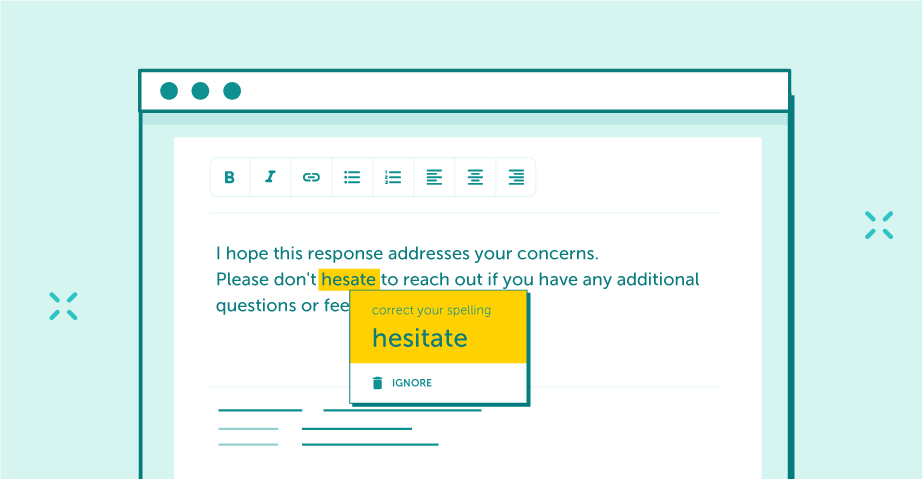
That typo or grammar goof you just made in an email might make a bad impression.
On top of that, when you’re rereading your email, you may come across something that you’d like to write better or add more context to. As a result, you don’t just make sure that your email is free of typos but also more informative and effective.
The way you respond to your email recipients is an integral part of your communication with them. It is essential to be mindful of how you come across, as well as the grammar and spelling of the message. You should also be aware of how you can make your email stand out by adding context, evoking emotion, and providing a clear call to action.
The most important thing is to be authentic – in doing so, you invite your recipient to have a meaningful exchange with you, and the result of it is a friendly relationship between the two parties. At the end of the day, the recipient is able to see that you’ve taken the time and effort to craft an adequate response, which will only help your business in the long run.
We live in a world where your customers switch seamlessly between laptops, smartphones, and tablets. They navigate a complex digital ecosystem – checking emails, using mobile apps, and reacting...
We are delighted to announce that Vercom S.A., the company behind the EmailLabs project, has successfully completed the ISO 22301 certification process. This significant achievement underscores our commitment to...
EmailLabs, as part of the Vercom group, proudly announces its full commitment to aligning its ICT services with the latest cybersecurity standards. In response to dynamically changing regulations, the...
We are pleased to announce that MessageFlow, a product from the Vercom S.A. group, has received the prestigious CSA (Certified Senders Alliance) Certification. This recognition not only underscores the...
Best practices, Email Marketing, Pytania i odpowiedzi
Mail merge combines a template document with data to create personalized communications. This technique saves time by automatically generating individualized letters, emails, and labels without manual entry. What Is...
IT & Tech, Pytania i odpowiedzi, Technical
When an email travels from sender to recipient, it passes through several critical components of email infrastructure. At the heart of this journey sits the Mail Transfer Agent (MTA)...
Best practices, Deliverability, Google and Yahoo's Requirements, Pytania i odpowiedzi
The world of email marketing is constantly evolving, and leading mail service providers – Gmail, Yahoo, Microsoft, and Apple – regularly update their guidelines for senders. In recent years,...
Best practices, Email Marketing, Pytania i odpowiedzi
Mail merge combines a template document with data to create personalized communications. This technique saves time by automatically generating individualized letters, emails, and labels without manual entry. What Is...
IT & Tech, Pytania i odpowiedzi, Technical
When an email travels from sender to recipient, it passes through several critical components of email infrastructure. At the heart of this journey sits the Mail Transfer Agent (MTA)...
Best practices, Deliverability, Google and Yahoo's Requirements, Pytania i odpowiedzi
The world of email marketing is constantly evolving, and leading mail service providers – Gmail, Yahoo, Microsoft, and Apple – regularly update their guidelines for senders. In recent years,...
Gmail, Google and Yahoo's Requirements
You might have noticed a new item in your Gmail sidebar recently – the “Manage subscriptions” tab, often flagged with a blue notification dot. While Google announced this feature...
IT & Tech, Pytania i odpowiedzi, Technical
Efficient email communication isn’t just about sending messages — it also involves integrating email functionality into your business systems and applications. Email APIs (Application Programming Interfaces) serve as the...
One of the most important yet often underestimated elements in shaping a company’s brand perception is the transactional email. In e-commerce, the design of such messages must be carefully...
Google and Yahoo's Requirements, Yahoogle
2024 brought fundamental changes to email marketing, introducing new, stringent requirements for senders. Since February 1, 2024, Google and Yahoo have started enforcing new deliverability rules, primarily targeting bulk...
We live in a world where your customers switch seamlessly between laptops, smartphones, and tablets. They navigate a complex digital ecosystem – checking emails, using mobile apps, and reacting...
Are your campaigns not engaging all recipients as you expect? Do they fail to open your emails or click on links, lowering your campaign effectiveness and email marketing ROI?...